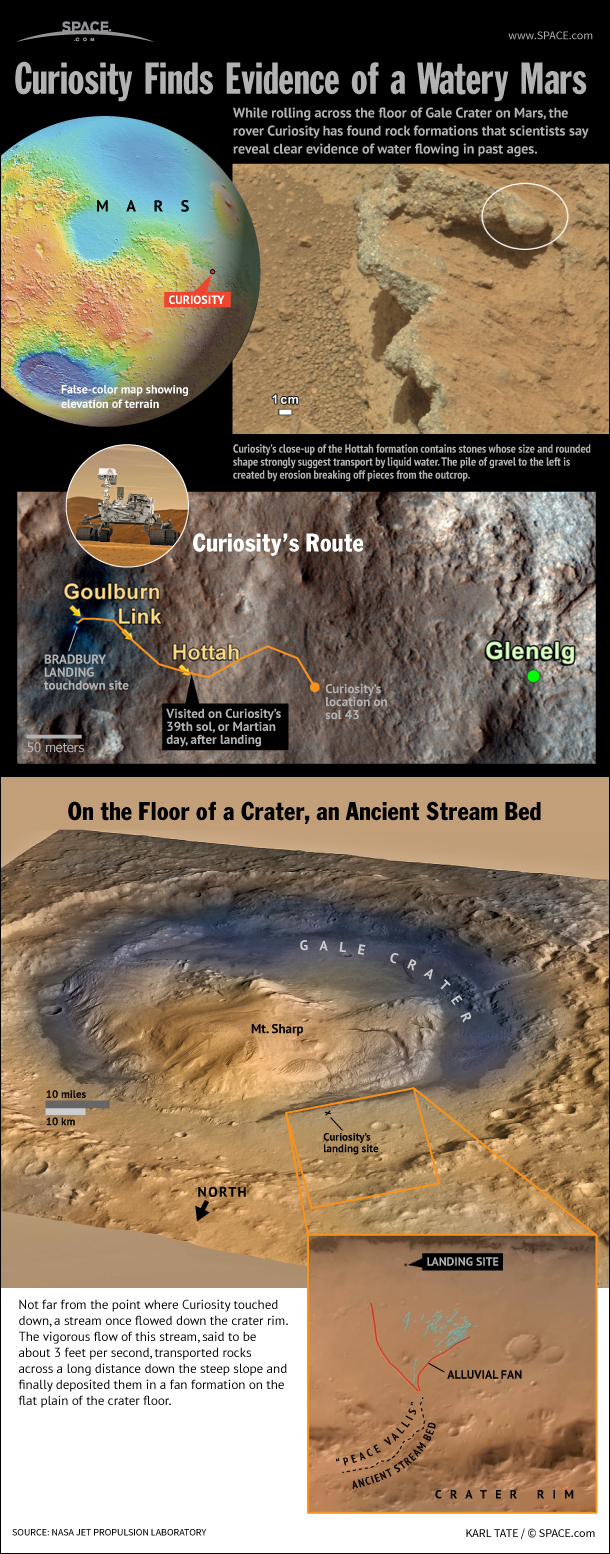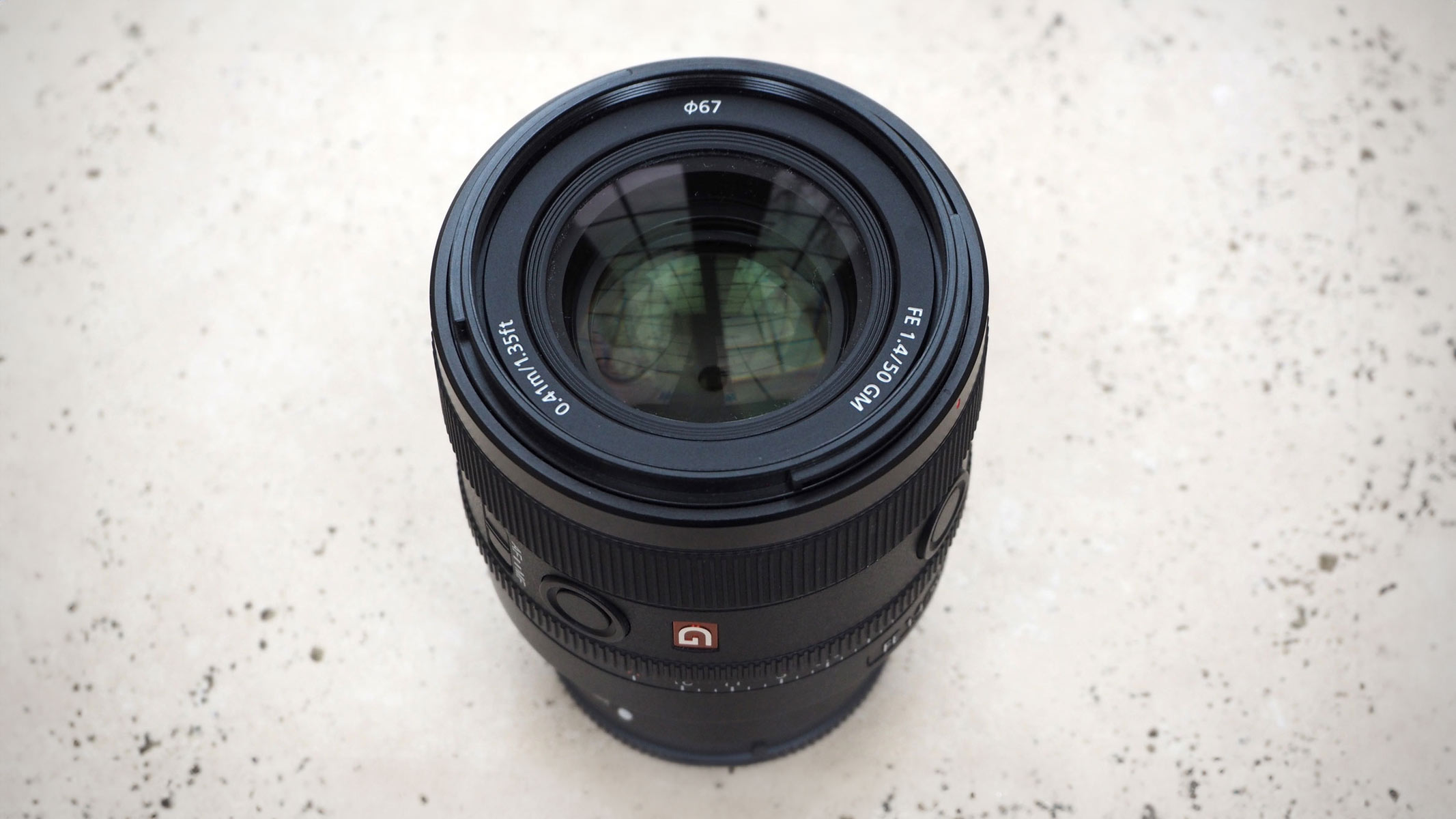Mars Rover Curiosity's Ancient Stream Discovery Explained (Infographic)

While rolling across the floor of Gale Crater on Mars, the rover Curiosity has found rock formations that scientists say reveal clear evidence that water once flowed on the Martian surface.
Curiosity’s close-up of the Hottah formation, which shows bedrock made of fragments cemented together as if by running water on Mars. A nearby pile of gravel was created by erosion breaking off pieces from the outcrop.
Not far from the point where Curiosity landed, a stream once flowed down the crater rim. The vigorous flow of this stream, said to be about 3 feet per second, transported rocks across a long distance down the steep slope and finally deposited them in a fan formation on the flat plain of the crater floor.
Curiosity visited the Hottah formation on its 39th sol, or Martian day after landing. The rover is well on its way to its next destination, a site called Glenelg, 1,300 feet (400 meters) east-southeast of its touchdown site.
NASA's $2.5 billion Mars rover Curiosity landed on the Red Planet on Aug. 5, beginning a two-year mission to explore the planet's vast Gale Crater for signs that it could have once supported microbial life. The 1-ton Curiosity rover is the size of a car, making it the largest rover ever sent to explore another planet.
Water Rushed On Mars, Curiosity Finds | Video
Amazing Mars Rover Curiosity's Martian Views (Latest Photos)
Mars Rover Curiosity: Mars Science Lab Coverage
A 'Curiosity' Quiz: How Well Do You Know NASA's Next Mars Rover?
Join our Space Forums to keep talking space on the latest missions, night sky and more! And if you have a news tip, correction or comment, let us know at: community@space.com.
Breaking space news, the latest updates on rocket launches, skywatching events and more!

Karl's association with Space.com goes back to 2000, when he was hired to produce interactive Flash graphics. From 2010 to 2016, Karl worked as an infographics specialist across all editorial properties of Purch (formerly known as TechMediaNetwork). Before joining Space.com, Karl spent 11 years at the New York headquarters of The Associated Press, creating news graphics for use around the world in newspapers and on the web. He has a degree in graphic design from Louisiana State University and now works as a freelance graphic designer in New York City.
